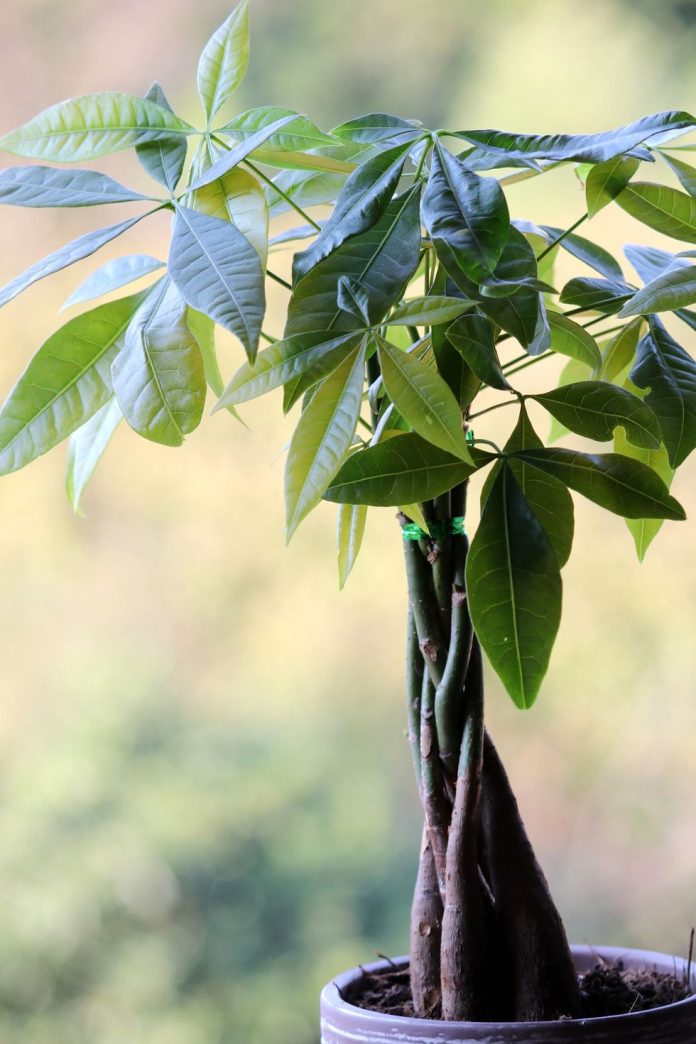One of the easiest houseplants to care for, a money tree is ideal for new plant parents and greenery veterans who want a break from fussy routines. Money tree care is simple: Similar to the snake plant and philodendron, a money tree will forgive you if you forget to water them every once in a while. It’s adaptable to various sun conditions and is even low-light friendly. Plus, with its corner-filling greenery, this large houseplant will repay your efforts since it’s so tall, glossy, and handsome. Native to Central and South America, money trees can grow to more than 60 feet tall in their natural habitat. You won’t have to prune your indoor money tree to contain it, but it can still reach an impressive six feet tall.
Money trees might pack you back in yet another way: They’re rumored to bring prosperity, abundance, and good fortune into your life (hence the name), so a money tree is a great plant to gift a grad or friend starting a new life chapter. It’s also always a great idea to buy yourself one to manifest good things in your home. Ahead, we’re outlining the money tree care guidelines and tips you need to know to keep your money tree happy and healthy.
Why Are Money Trees Considered Lucky?
Money trees, also known as Pachira aquatica, are considered a symbol of luck and prosperity—but they haven’t had that meaning for all that long. According to Bloomscape, this doesn’t date back centuries, as you might expect, but rather to the 1980s. The braided money tree as we know it was actually first cultivated by a truck driver in Taiwan and quickly became popular in Asia among feng shui practitioners.
Basic Money Tree Plant Care
Money tree care is easy if you know the basics and stick to them. Learn how to keep your money tree plant growing, without shedding leaves or turning brown.
Sunlight
Money trees like bright, indirect light, which means you should place yours near a sunny window that faces east, west, or south. Just be careful about giving it direct sunlight, which can scorch its leaves, especially during the hottest months of the year. That’s because the small money trees we grow indoors are juvenile plants; in nature, they’d be shaded from direct sun by taller trees in the forest.
Money trees will start to reach toward the sun, so turn your plant periodically to make sure it grows evenly.
Water
Even though money trees grow in wetlands, they don’t like to remain soaking wet. Water your money tree until water runs out of the bottom of the pot every one to two weeks, allowing the soil to mostly dry out between waterings. You may find that you need to water it more or less often depending on the conditions inside your home. The best way to tell if a money tree needs water is to poke your finger into the soil. If it still feels wet, wait a few more days and check again before you give it a drink. Also, dump the saucer underneath your plant when it’s finished draining each time you water it.
Temperature and Humidity
Money tree plants are tropical, so they do best in warm environments between 65 and 85 degrees. To increase the humidity to around 50 percent, where money plants like it, you can run a humidifier or group other houseplants near your money tree plant; they’ll transpire (release water vapors) and be mutually beneficial to each other. Misting actually isn’t an effective way to boost humidity, no matter how many times you’ve heard or read that suggestion.
Socha//Getty Images
Do I Need to Braid My Money Tree?
While money tree plants don’t have to be braided, most of the modern money trees are braided when you buy them to give them a more substantial trunk. Braided money trees are actually multiple plants that have had their trunks woven together during growth while they’re flexible. If you’d like to braid your plant, weave the trunks together gently and loosely tie a string around the top to keep it together. As the tree grows, continue this process.
Money tree plants are traditionally round on top, but you can also let your plant do its own thing and just prune problematic parts to keep your plant thriving and encourage new growth. You can also prune your plant to keep it small if you’d like.
Common Money Tree Problems
Money tree plants are prone to bugs such as aphids and scales, but applying neem oil usually takes care of any pests. All of these pests can cause major damage to your plant, so make sure you deal with them as soon as you see them to avoid loose, drooping, and dying leaves.
Where to Buy a Money Tree
We like to recommend these places to buy a money tree online—many of them allow you to customize your planter or select a size. It’s always great to head to your local nursery too.
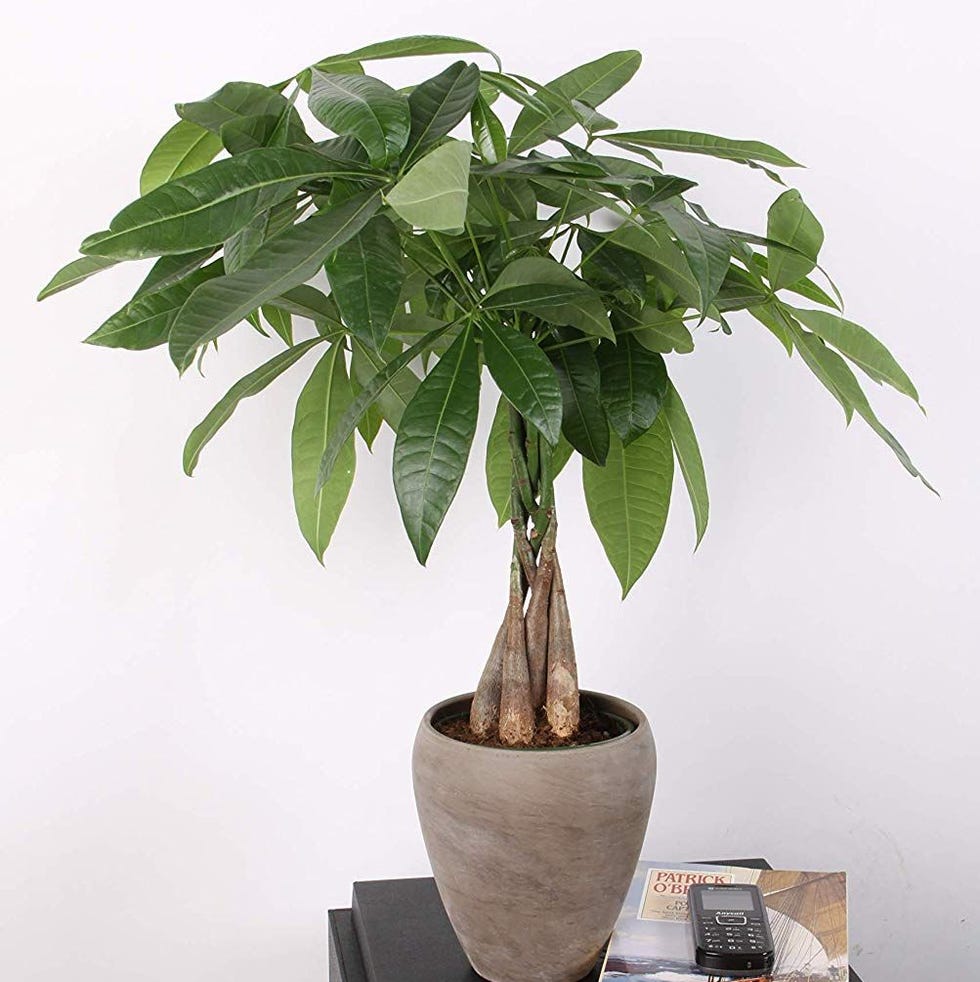
Costa Farms Money Tree
Now 20% Off
Credit: Costa Farms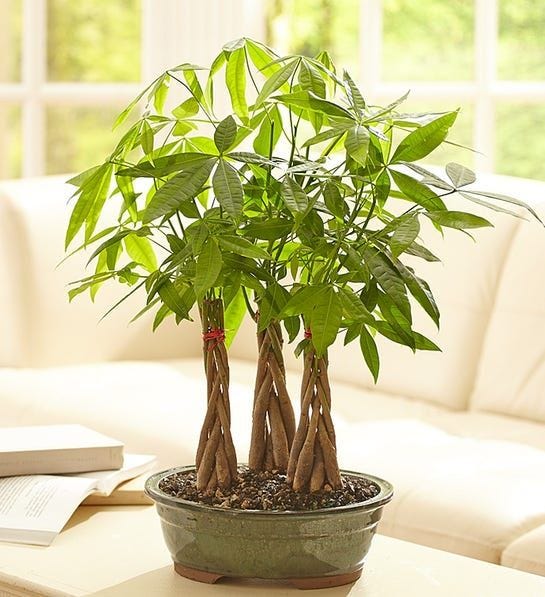
1800Flowers Money Tree Grove
Credit: 1800Flowers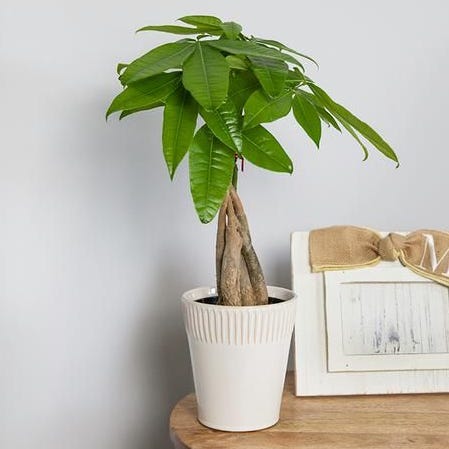
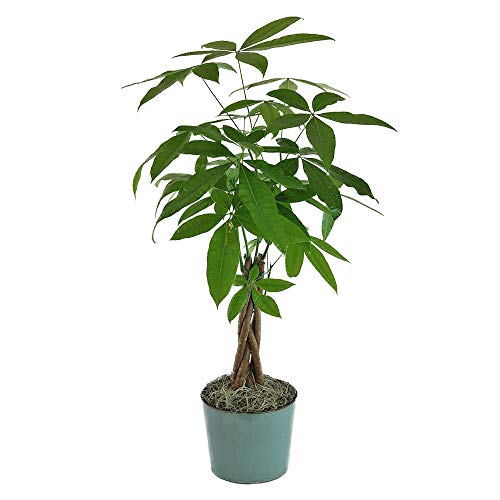
American Plant Exchange Money Tree
Follow House Beautiful on Instagram.
..
Brittney Morgan is a noted land mermaid and a Virgo with a penchant for crafts, red lipstick, and buying way too many throw pillows. Her work has also been published at Apartment Therapy, NYLON, HuffPost, Hello Giggles, Elite Daily, and more.
Arricca Elin SanSone has written about health and lifestyle topics for Prevention, Country Living, Woman’s Day, and more. She’s passionate about gardening, baking, reading, and spending time with the people and dogs she loves.
Kate McGregor is House Beautiful’s SEO Editor. She has covered everything from curated decor round-ups and shopping guides, to glimpses into the home lives of inspiring creatives, for publications such as ELLE Decor, Domino, and Architectural Digest’s Clever.
www.housebeautiful.com
https://www.housebeautiful.com/lifestyle/gardening/a30298787/money-tree-care/

